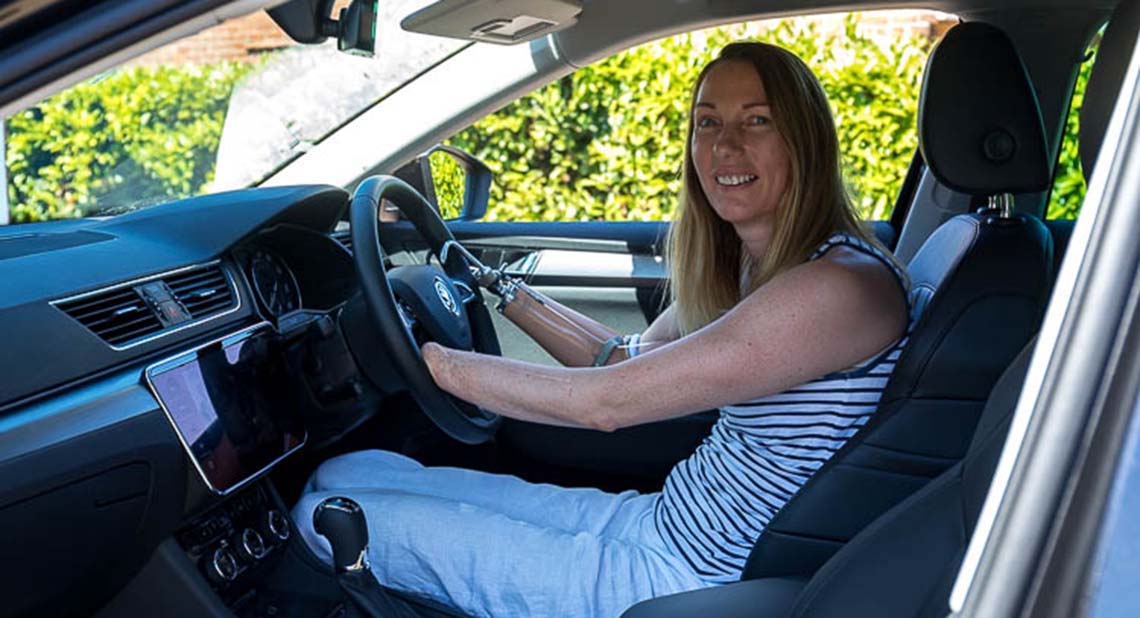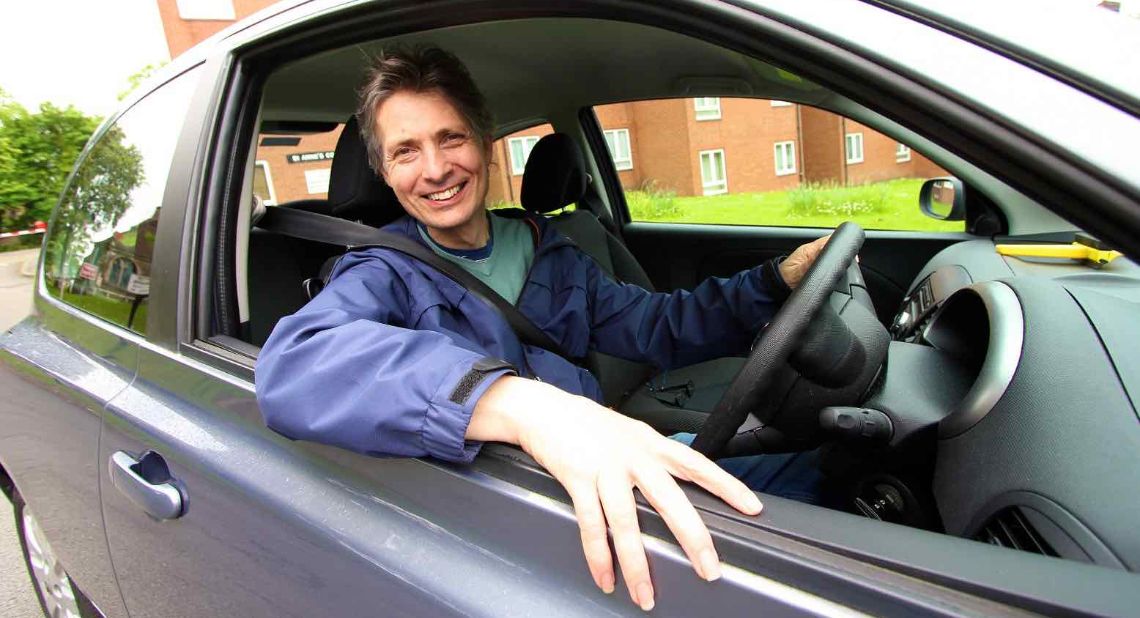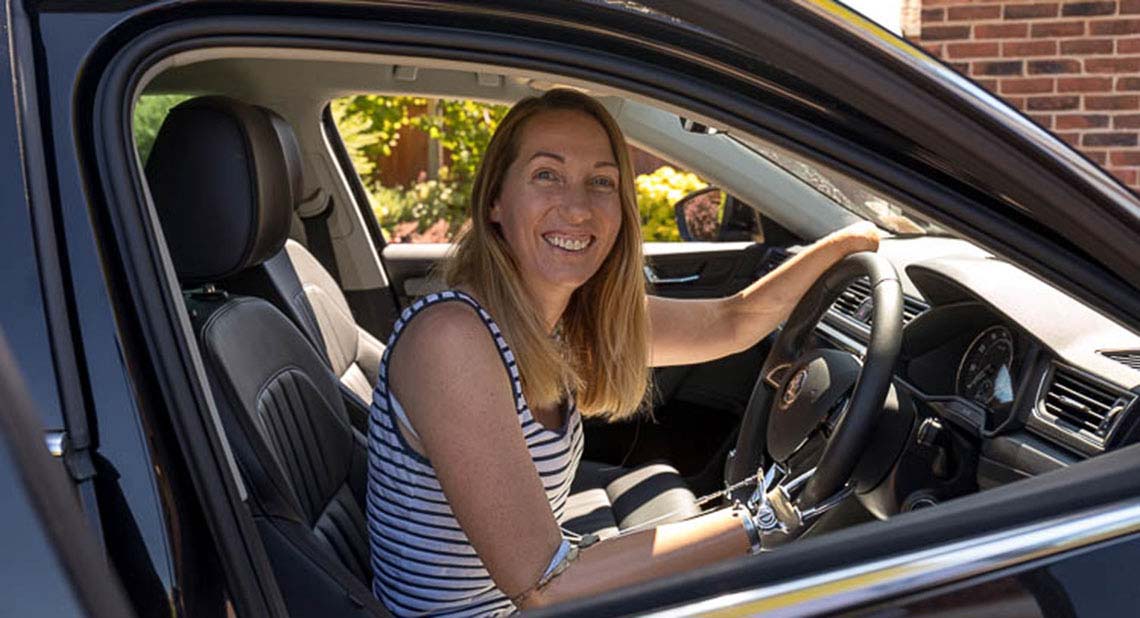Independent mobility consultant Helen Dolphin MBE shares the details of her recent driving assessment for adaptations help and advice.
After I became disabled I voluntarily surrendered my driving licence to the DVLA. When I decided I wanted to get my licence back the DVLA sent me to a mobility assessment centre, run by the charity Driving Mobility to find out if I would be safe to drive and what adaptations I may need. As this was nearly 20 years ago I decided it was time to repay a visit to my local mobility centre, which is East Anglian Driveability based in Thetford, to see what it is like for disabled people having an assessment today.
There are 16 main mobility assessment centres dotted around the UK and many of them have satellite centres so the majority of people will not have to travel very far to attend.
I know when I was told I would need to have an assessment I thought it would be just like having a driving test but I couldn’t have been more wrong. Mobility centres are staffed by occupational therapists (OTs) and approved driving instructors ADI’s and their aim is to help disabled people wherever possible to remain mobile.
On arrival at the centre in Thetford I was met by Isabel Coe who offered me a drink and showed me where the accessible toilet was. She made me feel very welcome and relaxed as she took me through a questionnaire covering my driving experience, medical history and physical abilities. As I already have an adapted vehicle I asked Isabel to treat me as if I was a newly disabled driver. Wherever possible this questionnaire is usually sent out to people in advance so they can fill it in at home and send it back to the centre before the assessment. This enables the centre to ensure they have everything they need e.g. a particular vehicle.
During the assessment Isabel explained that if the referral is made by DVLA I would have to undergo cognitive tests but they are not always necessary, unless the OT feels they would be useful in determining what adaptations may be needed, or if the medical condition was neurological with the potential to have an impact on driving ability. I decided to attempt the cognitive tests which, Isabel told me, were designed to assess my ability to carry out many of the skills required for driving. There were lots of tests I didn’t get quite right but apparently my results were completely normal for someone without a cognitive impairment.
After the cognitive tests I was then taken to the ‘static assessment rig’ which is like a car set up with all kinds of different tests and controls. This helps the OT assess both my driving ability and what adaptations I may need. I had the rig set up with hand controls and there were various tests which involved emergency braking and accelerating. Even as an experienced driver I still made a few mistakes and took a bit too long to react in some cases, especially when I was talking. It really showed me how easy it is to be distracted when you’re driving. The rig set up is also used to test your visual field. I’m not sure if static rigs are available at every centre so do ask when you make your appointment if you’re interested in trying it.
The final assessment is the driving assessment. I had my assessment in my own car but for a newly disabled driver without their own vehicle the mobility centre will supply a vehicle with various adaptations. If like me, you have a disability that means you need quite sophisticated adaptations the mobility centre will arrange in advance to have one available as at the majority of assessment centres their standard test vehicles only have the basics. I was taken out on a route which encompassed roundabouts, dual carriageway, complex junctions, quiet estates, in fact everything that you see on a normal journey. Alfie, who was the ADI assessing my driving told me he was looking at how I coped with certain situations and thinking if there was any equipment that would be helpful. All Mobility Centre cars have dual controls so the ADIs can brake if absolutely necessary. The feedback from Alfie after my assessment was that I coped well with all the different situations but was a bit too quick at times!
After the driving assessment, the OT and ADI will confer and decide what adaptations they recommend. You can use their assessments and driving tips and advice to improve your confidence, or to find out more about adaptations you may not have considered before, helping you to stay driving for longer.
I know that for people attending for the first time it can be quite nerve wracking but for the majority of customers it’s a really positive experience as it will help get you back on the road.
Read More Articles Like This:
Everything you need to know about PIP
Everything uou need to know about driving after a stroke
![]()







